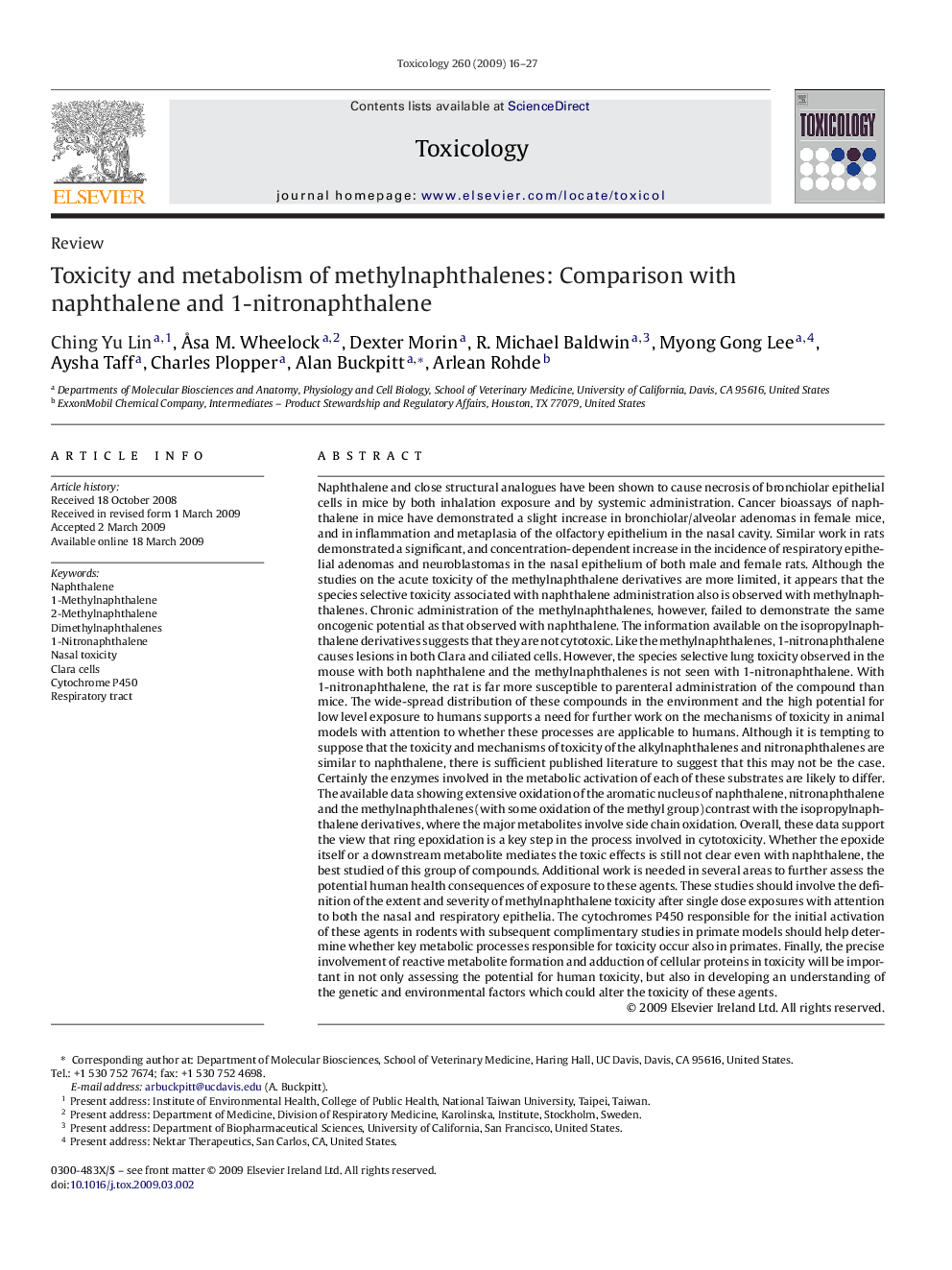| Article ID | Journal | Published Year | Pages | File Type |
|---|---|---|---|---|
| 2596840 | Toxicology | 2009 | 12 Pages |
Naphthalene and close structural analogues have been shown to cause necrosis of bronchiolar epithelial cells in mice by both inhalation exposure and by systemic administration. Cancer bioassays of naphthalene in mice have demonstrated a slight increase in bronchiolar/alveolar adenomas in female mice, and in inflammation and metaplasia of the olfactory epithelium in the nasal cavity. Similar work in rats demonstrated a significant, and concentration-dependent increase in the incidence of respiratory epithelial adenomas and neuroblastomas in the nasal epithelium of both male and female rats. Although the studies on the acute toxicity of the methylnaphthalene derivatives are more limited, it appears that the species selective toxicity associated with naphthalene administration also is observed with methylnaphthalenes. Chronic administration of the methylnaphthalenes, however, failed to demonstrate the same oncogenic potential as that observed with naphthalene. The information available on the isopropylnaphthalene derivatives suggests that they are not cytotoxic. Like the methylnaphthalenes, 1-nitronaphthalene causes lesions in both Clara and ciliated cells. However, the species selective lung toxicity observed in the mouse with both naphthalene and the methylnaphthalenes is not seen with 1-nitronaphthalene. With 1-nitronaphthalene, the rat is far more susceptible to parenteral administration of the compound than mice. The wide-spread distribution of these compounds in the environment and the high potential for low level exposure to humans supports a need for further work on the mechanisms of toxicity in animal models with attention to whether these processes are applicable to humans. Although it is tempting to suppose that the toxicity and mechanisms of toxicity of the alkylnaphthalenes and nitronaphthalenes are similar to naphthalene, there is sufficient published literature to suggest that this may not be the case. Certainly the enzymes involved in the metabolic activation of each of these substrates are likely to differ. The available data showing extensive oxidation of the aromatic nucleus of naphthalene, nitronaphthalene and the methylnaphthalenes (with some oxidation of the methyl group) contrast with the isopropylnaphthalene derivatives, where the major metabolites involve side chain oxidation. Overall, these data support the view that ring epoxidation is a key step in the process involved in cytotoxicity. Whether the epoxide itself or a downstream metabolite mediates the toxic effects is still not clear even with naphthalene, the best studied of this group of compounds. Additional work is needed in several areas to further assess the potential human health consequences of exposure to these agents. These studies should involve the definition of the extent and severity of methylnaphthalene toxicity after single dose exposures with attention to both the nasal and respiratory epithelia. The cytochromes P450 responsible for the initial activation of these agents in rodents with subsequent complimentary studies in primate models should help determine whether key metabolic processes responsible for toxicity occur also in primates. Finally, the precise involvement of reactive metabolite formation and adduction of cellular proteins in toxicity will be important in not only assessing the potential for human toxicity, but also in developing an understanding of the genetic and environmental factors which could alter the toxicity of these agents.
